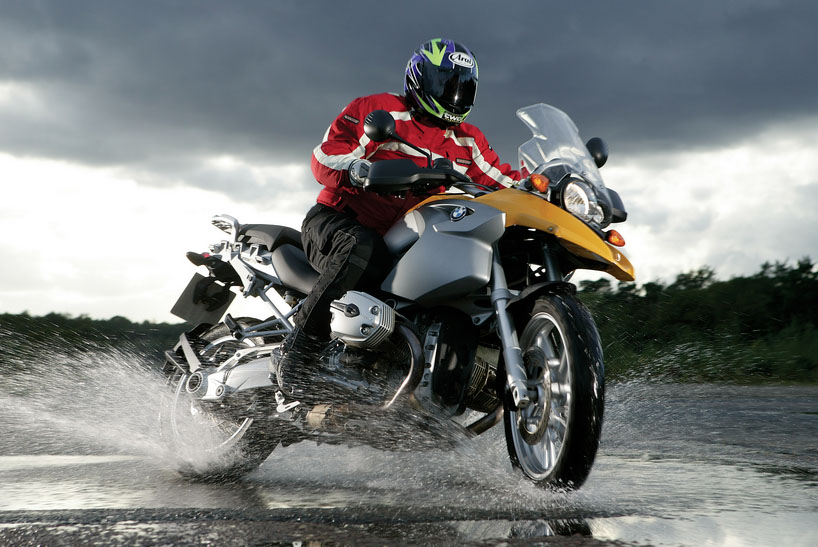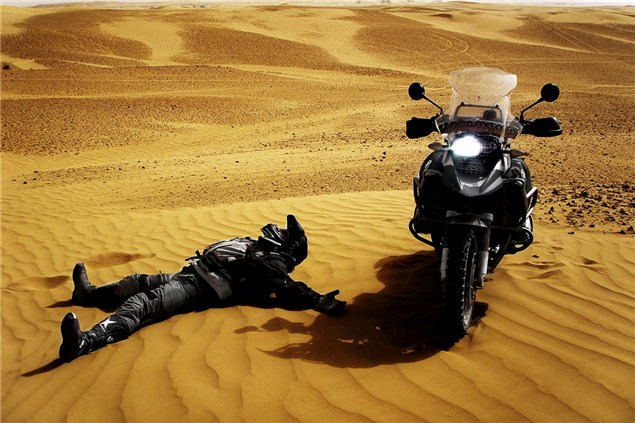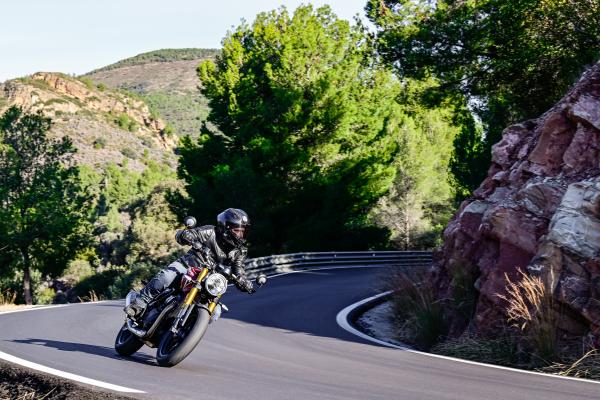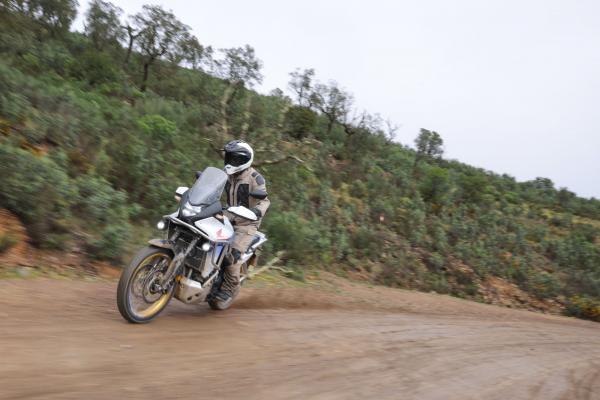WHAT'S the best all-round bike you can buy? The BMW R1200GS, successor to the R1150GS, is a strong contender. Thanks to its relatively light weight, tight handling, commanding yet comfy riding position, strong brakes and torquey engine, it’s not just practical but a right bloody laugh to ride as well. Now BMW's biggest seller, it’s taken the big trail bike class to a whole new level and even made motorcycling appeal to the - dare we say it - mainstream.
As a used buy, the bike has quite a few ‘issues’ - there have been nine product recalls in the UK. Some bits corrode or deteriorate and some reliability problems are just too significant to overlook. But thankfully, die-hard owners and aftermarket companies have plenty of fixes and there are tons of reading material about them. Luckily, we've condensed it down for you.
75 riders filled in our survey telling us all about their experience of the GS – they’ve covered nearly a million miles on their bikes in total, so it’s a huge pool of experience. And although problems exist, most owners are delighted with the bike. Forget best ‘all-round’; for many, the R1200GS is the best bike you can buy, full stop.
TYRES
Metzeler’s Tourance is by far the most popular rubber and loved by almost all who’ve tried them. It’s just been replaced by the Tourance II and early reports suggest they’re even better. Michelin Anakees are used and well liked by some as are Bridgestone BT 020 and 021s which are pure road rubber. For those who use their machines on the dirt Continental TCK80s are the top choice giving excellent off-road performance. Life span is fairly short and their speed rating means 100+ mph is not recommended.
Tyre life varies but average mileage is 8,800 for the front and 7,100 rear. The more off-road orientated rubber lasts significantly less, around 4,000 miles.
RUNNING COSTS
It’s an expensive bike to buy but not to run. Fuel consumption’s pretty good, averaging about 48mpg. Very high speed (100+mph) cruising or back lane thrashing can see this drop towards 30mpg, but steady use of the throttle can return 55-60mpg.
Insurance is fairly cheap and so is servicing. A minor service (every 6,000 miles) which includes checking the valve clearances is about £150-£250, and major services aren’t much pricer.
BRAKES
Genuine BMW brake pads are by far the most popular but a handful of owners tell us Ferodo, EBC and Carbone Lorraine work okay too. The rear pads wear out very fast on bikes with servo assistance – sometimes from new to kaput in much less than the 6,000 mile service interval, so keep an eye on them.
LUGGAGE
Hard luggage and GS’s go together like noses and faces. The most popular choice is BMW’s own Vario panniers and top box. They’re aluminium for that round-the-world look, and expand to increase capacity. Most owners rate them but some find they leak (especially after the bike’s been dropped onto them) and a few people say they’re heavy and prone to corrosion.
BMW’s cheaper plastic panniers are also well-liked. Givi are the most popular aftermarket choice. Touratech, Metal Mule and Caja Sahel are favoured by those who really do adventure riding.
FINISH
The 1200GS has more resilient paints and metals than many machines. But there are some areas owners think aren’t up to the job. The frame gets rubbed by the rider’s boot where it meets the swingarm and this can take the paint off pretty rapidly. BMW crash bars can suffer from rust. The forks and pannier rails get the odd mention as well and the paint on the engine has peeled on quite a few bikes. Nuts, bolts and the front engine cover also come in for some stick.
Some owners report fuel caps suffering and wheels corroding but most have had them replaced under warranty. BMW heated grips don’t stay as new as some owners would like.
MODIFICATION
Where do we start? Aftermarket exhausts are not as common as on racy bikes but plenty still fit them. Remus are the most popular and highly rated. Akrapovic are well thought of by those that fit them and the few that have Laser or Bos are happy with those. The consensus is if you want noticeable power gains you need to get rid of the cat which means Remus down pipes or a full Akrapovic system.
A handful have fitted Wilburs shocks front and rear and they’re all delighted with the improvement in ride and handling. A rear mudguard is a popular add on as the bike seems to cover itself and the rider’s left leg with mucky water otherwise.
Some people fit different seats for extra comfort and Sergent is the most popular brand. Screens are common as lots of people find the original causes buffeting.
The headlights are weedy, so additional lighting or HID kits are often fitted. GPS and communication systems are fairly popular with Garmin and Autocom being the favourite brands.
Headlight guards, crash bars, sump guards, oil coolers – the list goes on. Check out Touratech, Nippy Normans, Wunderlich and the many others.
WHAT GOES WRONG
The R1200GS isn’t a fault-free bike that’ll run forever. In fact it’s got more than it’s fair share of niggles, some of which are fairly major and others which occur all too frequently.
Oil leaks can develop where the engine meets the gearbox or from the end of the shaft drive. Batteries don’t last long. Gearboxes can fail. The CAN bus wiring loom has caused some owners grief. The fuel sender relay gives problems as can the clutch, final drive and more besides. It sounds a bit much, but BMWs warranty and dealers are well regarded.
If you do buy a bike privately, out of warranty, make sure you’ve got £500-odd stashed away in case one of these problems rears its ugly head. Later (2006/07) bikes seem better than early (2004/05) ones. That said, many bikes have racked up loads of trouble-free miles, while others have accrued long lists of problems.
WHAT TO PAY
As a guideline, Glass's Guide retail prices are £5,200-plus for 2004 ABS models, £7,000-plus for 2007 models (the 105bhp revision) and £8,500 upwards for 2010 models (the 110bhp revision). For reference, the 2013 bike (the next major update, featuring a partially-water-cooled engine) costs £11,395 RRP as of today.
You can find well-cared-for 2007/2008 bikes for about £6,000-£6,500 in private sales, while another £1,000-£1,500 will get you a 2009 or even 2010 model. For the same prices, trade sellers will sell you bikes that are correspondingly a couple of years older.
For the Adventure (which was launched at the end of 2005, for the 2006 model year), Glass's Guide retail values are approx £7,000-8,500 for 2006-2008 models and £9,500 for a 2010 bike. For reference, the new 2013 model is priced at £12,345.
For both the GS and the Adventure, you'd add £200 to these values if the Dynamic pack is fitted, and £500 for the Premium pack.
Read more Visordown Motorcycle Buyers' Guides.
Read BMW R1200GS owners' reviews or add your own.
OWNERS SAY...
I think more sportsbike riders would be converted to this type of bike if they had a test ride. I am so much more relaxed riding this than I ever was on my Blade and GSX-R. It has brought my joy of riding back.
Geoff Dodsworth
If you want a regular looking bike, then the GS is not for you. People look once, then twice and then stop and stare and even get up close. It’s fab.
Nina Joyce
I’ve had over 20 bikes in 31 years of riding. The R1200GS is simply the best.
Dean Lewis
I cannot think of a better all-round motorcycle than the 1200GS – it does everything that is asked of it and more.
Will Haylock
Warranty issues have been a pain in the arse, but if I had to replace ‘The Prawn’ I’d replace it with another R1200GS.
John Tremayn


























